Features
Here you’ll get to read interviews with Hidden Shoal artists and other folk we call our friends, see us wax lyrical about our favourite tracks, wrap your ears around artist and label curated mixtapes and a host of other things we haven’t even dreamed up yet. If you’d like to keep up to date with Featured content and can’t rely on your memory then subscribe via our RSS Feed.
Enjoy!
Brief Conversations: An Interview with Markus Mehr
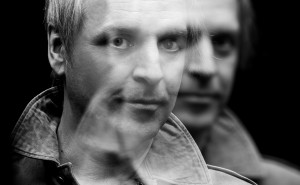 With the release of his new album Brief Conversations, Markus Mehr has delivered a stunning marriage of musicality and acoustic experimentalism. Through the capture and transformation of the sounds of the internal spaces we inhabit, Mehr presents a new kind of magical realism. With all those heady ideas in mind we thought it was the perfect time to sit down with him and have a chat.
With the release of his new album Brief Conversations, Markus Mehr has delivered a stunning marriage of musicality and acoustic experimentalism. Through the capture and transformation of the sounds of the internal spaces we inhabit, Mehr presents a new kind of magical realism. With all those heady ideas in mind we thought it was the perfect time to sit down with him and have a chat.
How are you managing in the current German lockdown?
I’m mostly at home. Since my studio is also at home, I spend even a little more time there. Of course I miss the opportunity to move freely and to meet friends. But in general, the corona crisis does not restrict me too much personally, neither physically nor mentally. My travel and consumer behaviour is generally not particularly extensive, so the quarantine hits me less hard than maybe others. The difficult part for all of us will occur after the lockdown I guess.
How did you first get into creating experimental music?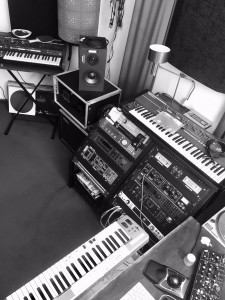
It was a slow process. I come from a rock background and at a certain point, however, there was a longing to start something new, to refresh things. So I focused my interest on electronic music but soon I noticed that it was not only about changing the field. I was chasing away more instruments than I added and suddenly there were tracks without a beat, without a meter, no melodies, no recognisable structures. That’s it, complete freedom. Our release history also shows very nicely that this development is a process that continues to this day and I hope this kind of naivety will go on as long as I release something.
Can you tell us what inspired you to create Brief Conversations
During the preparations for a commissioned work (EDIT 1/0/0/0, Moritzkirche, Augsburg) in September 2019, I had the opportunity to do recordings all alone in this beautiful, pure church. Just listening to this room several nights was a very inspiring experience. This gave rise to the idea of developing this approach, recording different rooms with different shapes, recording the quiet. To listen to what a room has to tell us – the sounds it creates, sounds which can be generated in it by different impulses – fascinated me. Brief Conversations describes these dialogues and summarises it in sonic narratives.
Can you give an overview of the kinds of processes involved in the recording and production of this album?
It starts with the recordings. My field recordings are always the basis. They often happen by chance. Some are also planned because I noticed a sound event the day before or because something attracts me, for example an empty parking garage, a stairwell, a tunnel or a synagogue. After capturing sounds I look into the recordings almost microscopically, searching for lively and emotional aspects. These can be rhythmic or harmonic elements. All sounds that have something to tell are considered. In order to create something new, I use tools like most “normal” musicians: pitch shifting, time manipulation, modulation effects, delays, equalisers, distortion. The resulting components, which add something to the dramaturgy and the dynamics of the story, remain in the track; the others get chipped away.
Can you outline how one of the tracks off Brief Conversations evolved, from the original sourcing of the sounds through to the refinement of the composition?
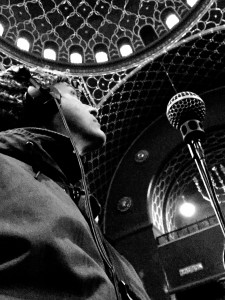 Ah yeah … I think of ‘Shelter’. I got permission to take pictures in a huge, disused gas tank. And when I was ready to record, the worst storm that can be imagined broke out. No hope of improvement for the rest of the day. Everything I recorded was covered with this kind of white noise, generated by the wind and the pounding rain. In response, I started stamping my feet and making loud noises to deal with the annoying noise. Fortunately, I also packed my contact microphone and recorded additionally the very deep resonance of the walls and railings. When I got home after hours I was sure that the recordings could not be used. But wrong: the contact microphones – with some support from the Mini Moog – form the foundation of the track. The percussive stamping and hits are almost unprocessed and with a pinch of digital sophistication I was able to elicit a few spherical and even harmonious elements from the room recordings. If one listens superficially, ‘Shelter’ may have a more synthetic appearance. In fact, it is a purely electro-acoustic piece. With field recordings you rarely get exactly what you expect.
Ah yeah … I think of ‘Shelter’. I got permission to take pictures in a huge, disused gas tank. And when I was ready to record, the worst storm that can be imagined broke out. No hope of improvement for the rest of the day. Everything I recorded was covered with this kind of white noise, generated by the wind and the pounding rain. In response, I started stamping my feet and making loud noises to deal with the annoying noise. Fortunately, I also packed my contact microphone and recorded additionally the very deep resonance of the walls and railings. When I got home after hours I was sure that the recordings could not be used. But wrong: the contact microphones – with some support from the Mini Moog – form the foundation of the track. The percussive stamping and hits are almost unprocessed and with a pinch of digital sophistication I was able to elicit a few spherical and even harmonious elements from the room recordings. If one listens superficially, ‘Shelter’ may have a more synthetic appearance. In fact, it is a purely electro-acoustic piece. With field recordings you rarely get exactly what you expect.
How important is the conceptual aspect of your work?
 Very important. In the past few years I have been working conceptually only. Before I start working on something new I think about things and do some research. Collecting and sculpting new music is preceded by a theoretical process… most of the time. And once a concept is conclusive, I try to stick to it as much as possible. I think it’s like writing a book. You have to have in mind the whole story and bit by bit you invent the narrative strands and the characters.
Very important. In the past few years I have been working conceptually only. Before I start working on something new I think about things and do some research. Collecting and sculpting new music is preceded by a theoretical process… most of the time. And once a concept is conclusive, I try to stick to it as much as possible. I think it’s like writing a book. You have to have in mind the whole story and bit by bit you invent the narrative strands and the characters.
What are you listening to right now?
BBC 6 Music.
Favourite releases of 2020 so far?
Acoustic Shadows by Lea Belucci, The Experience of Repetition as Death by Clarice Jensen and Motus by Thomas Köner are really inspiring records. Radio France broadcast a piece by Jim O’Rourke called Shutting Down Here (still available online). I was there when they performed this piece originally in Paris at the INA-GRM Multiphonies Series. It’s just brilliant. And my friend DOT made an album called Monsters … so good.
What’s your next creative project?
Basically I’m concentrating on a sound installation. But just because it feels right at the moment I started playing around with stuff for cello, viola and violin. This is quite the opposite of what I’m doing normally. And because I’m not that much interested in playing live any more, my long-time live visual partner Stefanie Sixt and I will turn towards short films a bit more. We recently released Separate Waves Of One Ocean, and the next one could come out quite soon. And here and there I help recording stuff for Slowvox, the project of my girlfriend. I’m really happy about all this things….
Some Links:
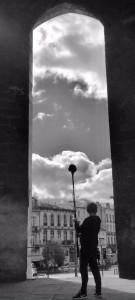 Markus Mehr – Brief Conversations
Markus Mehr – Brief Conversations
Jim O´Rouke – Shutting Down Here
Sixt/Mehr – Separate Waves Of One Ocean
Three Questions With Connected View
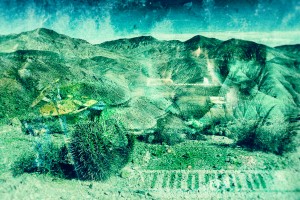 Connected View produce trojan horses. On first listen their output is littered with seemingly innocent, naive late-night instrumental jams, but on each successive spin you begin to notice the patterns and the purposefulness. By this time the woozy, rolling melodies have begun to mesmerise and before you know it you’ve fallen through the wormhole. Kinetic synths, sinuous basslines, live drums and found sounds intertwine to create an atmosphere akin to eavesdropping on Boards of Canada improvising with Fridge. Playful, dirty, brooding, radiant and rhythmic. Magic stuff!
Connected View produce trojan horses. On first listen their output is littered with seemingly innocent, naive late-night instrumental jams, but on each successive spin you begin to notice the patterns and the purposefulness. By this time the woozy, rolling melodies have begun to mesmerise and before you know it you’ve fallen through the wormhole. Kinetic synths, sinuous basslines, live drums and found sounds intertwine to create an atmosphere akin to eavesdropping on Boards of Canada improvising with Fridge. Playful, dirty, brooding, radiant and rhythmic. Magic stuff!
To learn a little more about what makes Connected View tick we asked the boys to pull three questions out of the bag…
What’s the best show you’ve ever been to?
The best show we’ve been to was Stereolab opening for Sonic Youth at the Electric Factory in Philadelphia in the year 2000. It was a crossroads in many respects. We were young and impressionable and it changed our view of music henceforth. At the time, we were huge Sonic Youth junkies, had been for years. We had heard of Stereolab, but never really investigated. Their set blew us away. It was a lot of stuff from the Microbe Hunters/ Cobra era. From there on we were Stereolab fanatics. It was just what we needed at that time. The next day I went to the record store and bought everything by Stereolab that they had in stock. Instead of noisy guitar-based music, we started seeking out more synthy and baroque stuff. We dug into the types of music that inspired the Stereolab sound and sought out decades worth of influences and then the influences of the influences. Kraut, psych, electronic, edm, tropicalia, different styles of jazz, synth pop, shoegaze, ect. We loved it all. Its been like peeling an onion. That show set us on the path to eventually making our own music.
Why make music?
We’ve been asking ourselves that question forever as well. Not sure its ever been adequately answered or ever will be. It doesn’t have to be. Whenever I ask myself this question I think of a few of my acquaintances who are not creative, or not involved in art in any way, and I just couldn’t imagine living that way, without a creative outlet. It seems like a pointless existence. Sometimes I wish I could go without music, it would save us a lot of time in editing. I’ve realized that whenever I feel down or I am having some difficulties in life, I turn to music more. It is the great escape. Other artists I’ve read in interviews have said things like “it’s the search for the unknown, a beautiful mystery that you get to unfold.” We can go with that too. There’s some kind of nervous energy within us that can only be released through music.
What’s one of your favourite albums that’s unlikely to be featured on anyone else’s list of favourite albums, and why do you love it?
One of our favorites that has seemed to be in the rotation for a long, long time & probably isn’t well known is Movietone’s ‘Blossom Filled Streets.’ We enjoyed all of Movietone’s output, but this one most. I was instantly drawn in by how it sounded as if it was recorded on the beach and the ocean imagery imbedded within. It enlightened me to the idea of concept albums beyond the proggy stuff I had previously been exposed to. It helped to form my concepts of what an album is supposed to be. A cohesive group of songs with a central theme tying them together. A theme, but also similar instruments and a style spread over a group of songs. When I hear ‘Blossom Filled Streets’ it connects me to moments and places over many years and now has that nostalgic importance that some albums obtain. To describe the sound to someone who hasn’t heard it would be difficult. The album is kind of a post-rock-ish array of horns, rhythm section, electric guitar, keyboards, bass, and sea sounds with great singing and lyrics.
Three Questions with Erik Nilsson
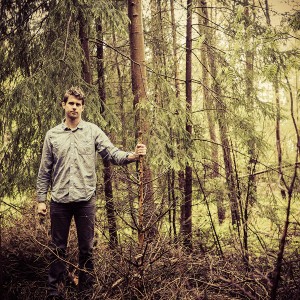 Erik Nilsson creates music that, in someways, defies logic. It is intrinsically linked to the manipulation and re-ordering of the “natural”, yet through this process somehow creates a new “nature”. Releases such as Hearing Things, Recollage and his forthcoming The Imperfect Tense are testaments to Nilsson’s innate sense of melody and progressive compositional strategies. Drawing on folk, classical and electronica, Nilsson blends acoustic instruments with field recordings and computer-generated sounds, crafting music akin to early Four Tet, Tortoise at their most minimal, and fellow Scandinavian soundscapers The Gentleman Losers. Yet all his work sounds like Erik Nilsson.
Erik Nilsson creates music that, in someways, defies logic. It is intrinsically linked to the manipulation and re-ordering of the “natural”, yet through this process somehow creates a new “nature”. Releases such as Hearing Things, Recollage and his forthcoming The Imperfect Tense are testaments to Nilsson’s innate sense of melody and progressive compositional strategies. Drawing on folk, classical and electronica, Nilsson blends acoustic instruments with field recordings and computer-generated sounds, crafting music akin to early Four Tet, Tortoise at their most minimal, and fellow Scandinavian soundscapers The Gentleman Losers. Yet all his work sounds like Erik Nilsson.
To get a glimpse inside the master’s mind we asked Erik to pull three questions out of the bag…
What kind of activity is your music made for?
I imagine that the music I make likes to put its listener in a state of “inwardness”. Perhaps it is music for the activity of paying close attention, either to the music itself or to some other solitary activity: walking, sitting, reading, breathing, running. I particularly admire a piece of music that sometimes just lends a certain emotional quality to my surroundings or to whatever I am up to , the next day has me counting beats, and the day after that seems to be all about texture. That is the kind of music I aspire to make.
Why make music?
Because it presents an opportunity to apply oneself – mind, body, and soul – to the construction of something like a rudimentary, abstract, self-contained world. Such a world makes possible the experience and exploration of longing, elation, sadness, grief, or ecstasy as such, in the absence of any particular cause or object. One may for instance try being gentle (as such) or aggressive (as such), probe the relationship between the two, or push either or both as far a one possibly can. There is obviously a tremendous sense of freedom here, but also a sense of duty. Musical ideas always seem to have potentiality, to be en route somewhere – to demand something. One listens carefully and labours to bring potentiality into (imperfect) being. Somehow, it reminds me of what it is like to be alive.
What’s your most treasured item of musical gear?
A Martin HD-28 that friends and family had got me as a graduation gift. Not only do I love to play it, it reminds me of people I love, and also of the fact that I have it in me to carry something difficult to completion.
Three Questions With Summon the Birds
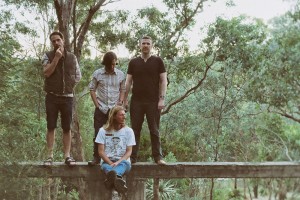 Summon the Birds’ latest album Blood Love is an inspired interweaving of song and story. The 6-track epic pulls you in right from the opening strains of ‘Funeral for a King’ and only lets go long after brilliant closer ‘London Tap Water’ rings out its last note. The band’s ability to immerse the listener in vivid scenes that feel somehow intrinsically Australian, even if their subject matter drifts abroad, sees them as kindred spirits with Australia’s Augie March and The Drones. It’s a very special thing indeed.
Summon the Birds’ latest album Blood Love is an inspired interweaving of song and story. The 6-track epic pulls you in right from the opening strains of ‘Funeral for a King’ and only lets go long after brilliant closer ‘London Tap Water’ rings out its last note. The band’s ability to immerse the listener in vivid scenes that feel somehow intrinsically Australian, even if their subject matter drifts abroad, sees them as kindred spirits with Australia’s Augie March and The Drones. It’s a very special thing indeed.
To get a peek inside the Bird machine we asked Jonathan Shaw from the band to pull three questions out of the bag…
What’s the best show you’ve ever been to?
In 2011, Milky and I went to the now-defunct Harvest Festival in Werribee and saw a whole stash of incredible acts, including Mogwai, The Flaming Lips and Kevin Devine. For me, the highlight was Portishead. Oh man. My heart. To hear Beth sing ‘Roads’ live transported me beyond the stars… so beautiful.
Which song of yours is most important to you and why?
I’ll nominate ‘Journey to the Centre of the Earth’ from our new album because of its unrelenting ambition. I also feel that if you like that song, you’ll like Summon the Birds. Just to complete that track, all 9 minutes of it, and to actually evoke – sonically and lyrically – the falling of a man into the Centre of the Earth is – in my opinion – a huge artistic achievement for the band. It also completes the ultimate synthesis of STB – the music as narrative and the lyrics as sound.
What’s one of your favourite albums that’s unlikely to be featured on anyone else’s list of favourite albums, and why do you love it?
A big album for us in the making of Blood Love – and one that Milky and I bonded over particularly – is Talk Talk’s Laughing Stock, released in 1991. It is phenomenally good and as soon as I heard it, all I wanted to do was make music that good. The pace of it is what captured my heart. It unfolds at its own steady pace and weaves the listener into an unrelenting tapestry of beauty, wisdom, sorrow and light. I think it’s a colossal suite of songs and I can’t believe I only heard about it 8 or so years ago. We also based the final number of tracks on our record – 6 – on the number of tracks on Laughing Stock.
Three Questions With Target Archery
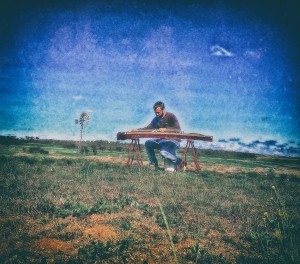 Target Archery’s stunning 2017 debut, The Clock of the Long Now, unwinds over 40 blissful minutes, weaving a suite of glimmering musical tapestries that expand beyond the borders of conventional guitar pop. Headed by Ambrose Nock (Apricot Rail) and featuring contributions from Apricot Rail members Justin Manzano (production and instrumentation) and Jack Quirk (guitars), Clock of the Long Now explores the fertile realm of delicate, experimental post-pop, influenced by the likes of Sound Dust-era Stereolab, left-of-centre indie-pop bands such as Lacto-Ovo, The Go! Team and Ninetynine, and a dash of late ’80s Sonic Youth.
Target Archery’s stunning 2017 debut, The Clock of the Long Now, unwinds over 40 blissful minutes, weaving a suite of glimmering musical tapestries that expand beyond the borders of conventional guitar pop. Headed by Ambrose Nock (Apricot Rail) and featuring contributions from Apricot Rail members Justin Manzano (production and instrumentation) and Jack Quirk (guitars), Clock of the Long Now explores the fertile realm of delicate, experimental post-pop, influenced by the likes of Sound Dust-era Stereolab, left-of-centre indie-pop bands such as Lacto-Ovo, The Go! Team and Ninetynine, and a dash of late ’80s Sonic Youth.
Why are we telling you all this? Because we cornered Ambrose and asked him to pull three questions out of the bag!
What’s the best show you’ve ever been to?
While it’s hard to go past Sonic Youth playing Daydream Nation in full, it’d have to be Gersey at the Rosemount many years ago – they were an incredible live band, especially in a small venue.
Build your own dream supergroup.
Keys & Sounds – Stina
Bass Guitar – Simon Struthers
Drum Kit – Ben Gibbard (lead singer from Death Cab but he played drums on their second record & they are stunning)
Woodwind – Mayuka Juber
Guitars – Myself!
Singing – Waltz era Glenn Richards (Augie March)
What’s one of your favourite albums that’s unlikely to be featured on anyone else’s list of favourite albums, and why do you love it?
I’m going to go with They forgot it in people by Broken Social Scene. Theres so many layers and little parts of it where they’ve just pushed things to their limit – things that you don’t notice at first but the character of the record has a lot of thought behind it. Without setting out to be, it’s almost a summation of all the techniques and things that were good about mid 90’s experimental guitar music, but with a lot of energy and delicacy thrown in.
Featured Track – perth ‘Drank and Kites and Tomorrow’
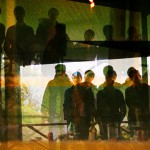 With an acutely transcendent and atmospheric vibe, perth‘s ‘Drank and Kites and Tomorrow’ is a lucid and expansive slice of wave-gaze pop. Pulsing, agitated rhythms offset the cosmic streaming of synths, voice and guitars, eventually morphing into a kind of motorik ambient that counterbalances propulsion with serenity. – Wagner Hertzog
With an acutely transcendent and atmospheric vibe, perth‘s ‘Drank and Kites and Tomorrow’ is a lucid and expansive slice of wave-gaze pop. Pulsing, agitated rhythms offset the cosmic streaming of synths, voice and guitars, eventually morphing into a kind of motorik ambient that counterbalances propulsion with serenity. – Wagner Hertzog
The Spaces Between: An Interview with Memorybell
 On his debut album as Memorybell, Grant Hazard Outerbridge delivered an abject lesson in need versus want. Obsolete is more than a simple minimalist document, indeed it could be argued that Outerbridge’s deft touch and innate sense of time make each of its sparse notes laden with import. As if each successive strike of hammer on piano wire were the only thing in the world… until the next. So it’s no surprise that Outerbridge is as much a thinker as a “feeler” when it comes to his musical work. In this utterly engaging interview the lovely Wagner Hertzog sat down with the artist and covered everything from Marvin Gaye to transient global amnesia. A truly great read.
On his debut album as Memorybell, Grant Hazard Outerbridge delivered an abject lesson in need versus want. Obsolete is more than a simple minimalist document, indeed it could be argued that Outerbridge’s deft touch and innate sense of time make each of its sparse notes laden with import. As if each successive strike of hammer on piano wire were the only thing in the world… until the next. So it’s no surprise that Outerbridge is as much a thinker as a “feeler” when it comes to his musical work. In this utterly engaging interview the lovely Wagner Hertzog sat down with the artist and covered everything from Marvin Gaye to transient global amnesia. A truly great read.
Many thanks to Wagner and Grant for their time and efforts in making this happen.
WH: You have been playing music for decades. Was the concept for Memorybell already in your mind before you started working on this music, or is it a more recent artistic project?
GHO: Memorybell is a very recent project. I wanted to focus on ambient music following the release of Genus Euphony, but the way this album came into being was decidedly unplanned.
I had been composing, shaping, and reshaping 20 or so songs but could never quite get them to feel the way I wanted them to. After I got out of the hospital, playing the songs was a uniquely unpleasant experience. They sounded awful to me and I had trouble remembering why I had written them in the first place. When a song felt wrong, I either threw it away completely, or focused exclusively on its essence (often just one or two chords) and explored that as granularly as I could.
My close creative collaborator from The Very Hush Hush, Peter Bo Rappmund, had heard most of the songs in various stages of their composition. When I was able to play these new, post-amnesia versions for him he strongly urged me to release the record under a new name. The songs were so different from anything I’d ever recorded that it made sense that they be the start of a new project.
WH: What are your main influences and sources of inspiration?
GHO: It sounds odd, but a lot of my musical ideas come from mundane objects. There is a particularly pleasant sound that the metal vent in the roof of my house makes when it lightly rains outside. In my old neighborhood, there was an old row house whose laundry exhaust whistled beautifully whenever it was in use. I could listen to the sounds of an oscillating fan all day long.
I enjoy sitting still and listening to the world, though it’s far too loud for me. This is one reason why I’m drawn to expansive silences. I draw an immense amount of inspiration and solace from the quiet that descends during a snowfall.
Less esoteric and more to the point, I find the following works very influential (in no particular order):
Marvin Gaye – What’s Going On
Air – Moon Safari
Billy Holiday – Solitude
Gas – Pop
Yo La Tengo – And Then Nothing Turned Itself Inside-Out
Stars of the Lid – The Tired Sounds of Stars of the Lid
WH: You seem interested in exploring extreme minimalism in your music, creating a slow, surreal experience for the listener. How did you come to develop such a style?
GHO: When I was studying classical music I was most attracted to dissonant passages. These “sour” notes and chords represented for me a warmer, more interesting way of approaching musical expression. I would sit for hours playing a single passage over and over, slow it down, and make subtle changes to it. As I grew older, I looked forward to this monastic repetition far more than completing whichever increasingly difficult piece of music I was learning.
Starting in the early 2000s, I played bass in The Very Hush Hush. Like the piano, my method of approaching the bass has changed over the years but, even back then, I was more concerned with playing the most interesting note than playing the root. One well-placed note can heighten anticipation in ways little else can.
My ears most want to hear what happens in the moments after a note is played before it dissolves into silence. That tension is powerful and shaping that tension is my primary concern.
WH: In terms of your creative processes, are you driven by your technique, or do you let your emotions drive your composing and arranging? Or is it a combination of both?
GHO: Emotion is the driving force behind my music.
To my ears, technique is only as useful as one’s ability to use it to express emotion. Technique for its own sake does little for me. It’s not that I don’t admire accomplished musicians, I do; I fully understand the time and dedication it takes to become an accomplished musician. But when technique becomes the focal point music becomes hollow. There is a whole spectrum of emotional experiences to be had while listening to music and feeling awe at someone’s ability is only one.
When I compose a new song, I try to keep my mind blank. Turn off my brain. Focus on what I’m feeling and sensing. What do I hear? What do I smell? Taste? I often begin with my eyes closed and open them once something interesting has presented itself. From there, repetition and manipulation of time and silence. How best to amplify what I’m feeling in the moment? What is the simplest way to say what needs to be said?
WH: Is there is a special place or time that you write music?
GHO: There used to be, but now I’m restricted to when my toddler son is either asleep or out of the house. Otherwise, he’ll come bounding from wherever he is and start mashing the keys. Adorable and amazing, but not conducive to thoughtful creation. I’m lucky if I get an uninterrupted chunk of 20 minutes per day.
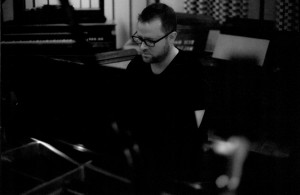 Place is an interesting problem with the piano. You’re stuck wherever the piano is. My work around for this used to be scribbling ideas in a notebook, studying them when I couldn’t be at a piano, etc. Now, unless I’m particularly inspired and one of my 20-minute mini-sessions produces something more-or-less fully formed, I’ll hold a strong phrase in my mind for as long as I have to until I have time to explore it at the piano.
Place is an interesting problem with the piano. You’re stuck wherever the piano is. My work around for this used to be scribbling ideas in a notebook, studying them when I couldn’t be at a piano, etc. Now, unless I’m particularly inspired and one of my 20-minute mini-sessions produces something more-or-less fully formed, I’ll hold a strong phrase in my mind for as long as I have to until I have time to explore it at the piano.
This results in a kind of fermentation. The most emotive part of an idea tends to become stronger, while the less necessary, more ancillary bits float off. This won’t always be my song writing process but, considering my 2 year-old just had a baby brother, I don’t see it changing in the near future.
WH: How do you work on individual songs? Do they keep evolving as you experiment with them over time, or do you find it quick and easy to finish each piece?
GHO: It depends on the song. Many songs are vague and gauzy at the start and I have to sit with them for a while before they reveal themselves to me. I try not to force anything onto them, just wait for whatever emotion it was that drove me to sit down at the piano to come out. Sometimes this process is quick, other times it is glacial. It took 14 years for ‘Somnolent’ to become what it is.
That’s an aberrant example, though. Most songs take on average 2-3 years before I finally leave them be. So, at any given time, the batch of songs I’m working on tend to have been initially conceived several years previous.
Occasionally, a song will emerge and I can’t figure out how to improve it. Those are always happy moments, though infrequent. I quite enjoy the long, slow evolution of a song. When one is finished, it may sound quite unlike it did in its infancy.
WH: In regards to your artistic process, are you a perfectionist, or more of a relaxed creator?
GHO: A complete and utter perfectionist, though I’m trying to let that go. My compromise is to direct my perfectionist tendencies toward my process rather than toward my music, to stay dedicated to giving the songs room to breathe, to grow, to change. Rather than try to force the songs to be something I want them to be, I allow them to be what they are. Even if I don’t like the end result, being true to the process feels like being true to my nature.
The most important part of my process is letting go. Ego can be a useful tool, in crafting personae, in pushing yourself, but I find it a barrier to making meaningful music. My best songwriting comes after I’ve processed whatever drove me to write a song in the first place. What remains after the dust settles.
WH: Silence, and the ambiguity it evokes, plays an important role in your music. Is this aspect of your music planned, or do you improvise?
GHO: Very much planned, as much as one can plan silence. I can never predict the affect any given length of silence will have, so I conduct tests. Do I add a single beat here? A measure of seven? Thirteen? It’s a little like introducing oneself to a strange animal.
As consumers of popular music our ears have been trained to expect predictability in regards to rhythm. 4/4 and 3/4 dominate the sonic landscape. The ghost of the Western classical music tradition is persistent. The purposeful shirking of predictable time signatures is a good thing but if not approached carefully it can estrange the casual listener.
When I shape the silence in my songs, I pay close attention to what my ears want. Then I give them something else. Unusual time signatures often do the trick, but I try not to employ them for their own sake. Sometimes a standard time signature alternated with an irregular or changing amount of silence has a magical effect. The ultimate test is if someone can’t tell that a song is in 17/8 or 13/4.
The ideal is to make the unexpected feel natural.
WH: Can you tell us about your experience of transient global amnesia and how it influenced the creation of this album.
GHO: In late February of 2014 my first son was two weeks old. He was curled up with my wife on the couch and I left to meet up with some friends. We had a couple of beers and I made my way home. It was lightly snowing.
I walked in the house and my wife and son were still curled up on the couch. I took my son upstairs, swaddled him and put him in his crib, and put on my headphones.
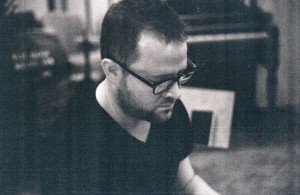 I woke up in a hospital roughly ten hours later on a gurney, obscenely bright fluorescent lights flashing over my face. I saw my wife and asked, “What am I doing here?” She patiently recounted the story of how I had come into our bedroom saying I couldn’t remember where I had been, what I had done, the people I had been with; how she had called the police, to whom I had apparently been quite charming and funny, who in turn summoned an ambulance that brought me to the hospital.
I woke up in a hospital roughly ten hours later on a gurney, obscenely bright fluorescent lights flashing over my face. I saw my wife and asked, “What am I doing here?” She patiently recounted the story of how I had come into our bedroom saying I couldn’t remember where I had been, what I had done, the people I had been with; how she had called the police, to whom I had apparently been quite charming and funny, who in turn summoned an ambulance that brought me to the hospital.
My poor wife told me this story over forty times before it stuck. Tests were run; EKGs, MRIs, CAT scans, toxicology screens. At one point, a group of medical students with clipboards surrounded my bed.
Throughout it all, my wife sat holding our absurdly small son wondering if I’d had some sort of stroke.
I was diagnosed with Transient Global Amnesia, which is, maddeningly, a diagnosis by exclusion. Once everything else has been ruled out, that’s what you get, a rare condition about which little is known. Extreme stress, sleep deprivation, and excessive physical exertion are thought to be the triggers.
The effect was as if a bomb had gone off in my brain. All memories months into the past and future were turned to glass.
The tests showed an increased sensitivity to light and sound. This proved problematic with a small baby at the house. I was given to carrying earplugs and noise-cancelling headphones with me for diaper changes. Going outside without sunglasses triggered a migraine. A screaming police siren triggered a migraine. A teakettle triggered a migraine. A loud sneeze triggered a migraine.
I quit my job. The thought of trudging through that soulless routine coupled with my new condition caused me so much anxiety I couldn’t function.
I was home all the time. When my son was sleeping, I had to do something. When my son was at day care, I had to do something. When I couldn’t sleep, I had to do something. I turned to the piano.
The songs I had been working on for the previous few years sounded like boxes of broken glass. Some of them literally gave me headaches. To heal, I picked them apart, focused on the parts that were soothing, that felt right, and threw out what remained. I reshaped them, let them ring out into silence, and created something new.
WH: Did you know beforehand that you were writing songs specifically for this album, or did you choose from songs that had already been written?
GHO: I chose from songs I had previously written, but completely altered them, post-amnesia. I had a concept for an album I had been pursuing before I awoke in the hospital. That’s the raw material to which I returned
At the time, it was important to me to force the issue, to make the collection of songs work even if they felt wrong. That’s when I really started focusing on silence. I threw out the superfluous, ornamental bits and chiseled the songs to their core. Then I wrapped them in silence.
WH: The title of the album, Obsolete, is very evocative. How did you settle on this title, and what does it mean to you?
GHO: I really don’t like titling my own songs. When I do, they’re almost always non-sequiturs. I reached out to an old friend, gave him the raw, un-mastered tracks and asked him to title the songs. He suggested the title track be named “Requiem for Obsolete Technology.” A great song name, to be sure, but I felt single word song titles were more apropos, given my editing method and interest in silence.
 In general, I often feel like I was born a couple hundred years too late. The world is the loudest it has ever been, and for someone who craves quiet it is a struggle to remain focused amongst the head-splitting sounds of squealing brakes, screaming people, crackling electric lines, and wailing sirens. I like to imagine what the world must have sounded like before the industrial revolution.
In general, I often feel like I was born a couple hundred years too late. The world is the loudest it has ever been, and for someone who craves quiet it is a struggle to remain focused amongst the head-splitting sounds of squealing brakes, screaming people, crackling electric lines, and wailing sirens. I like to imagine what the world must have sounded like before the industrial revolution.
Actually finding a quiet place is becoming more difficult. I live in Denver, Colorado and the legalization of marijuana, along with our city’s policy of being as inviting as possible for new businesses, has created an immense influx of people. City streets are jammed beyond capacity, and what used to be an easy drive into the mountains has become an arduous chore. Hiking trails are as clogged as motorways. Landmarks are being vandalized.
Quiet places are vanishing. So I create them in music.
WH: Did you work on the songs for Obsolete individually or collectively? The titles of the songs suggest a link between them.
GHO: The songs I ended up including on Obsolete were originally written at completely different times. The only thing they had in common was the fact they were the ones I had been drawn to in the years and months leading up to my amnesia. When I slowed them down and picked them apart after my return from the hospital, I noticed new patterns and arranged their order on the album accordingly. I rarely worked on one song at a time. I typically shaped the whole set of songs at once. If I made a severe edit on one, it often let to a complementary edit on another.
I touched on this earlier, but I find naming my own songs difficult. My natural inclination is to be abstract and sarcastic with names, but I felt it would be a disservice to the honest and existential nature of these songs to name them so. The titles of the songs are representative of various themes that were woven through my life when I reworked them. Koan is inspired by the Richard Brautigan poem, “Karma Repair Kit, Parts 1-4.” Ambulator is in reference to the Max Frisch novel, Man in the Holocene.
Both of these speak to me on a level that is difficult to articulate. “Karma Repair Kit” is a reminder to be still and accepting. Not of anything in particular, but of everything in general. Man in the Holocene is a meditation on loneliness and struck a note within me during my recovery, despite the fact I read it a very long time ago; it just bubbled up out of my mind.
The other song titles are fairly literal and loosely based on my friend’s suggestions. 2014 was unequivocally the worst year of my life. The amnesia wasn’t even the most difficult struggle, but I’m not going to elaborate. The songs are my way of processing what happened.
WH: What’s the main intent behind your music? What are you trying to communicate to your listeners?
GHO: That sitting still, especially when it is uncomfortable, is important; that the act of listening, whether it’s active or passive, is important. It slows down your thoughts, so you can spend time with them. Depending on your type of mind or life situation, that may not be desirable, but then it is all the more impactful.
Modern city life is fast and loud. We run around from place to place, from work to home, from the gym to the grocery store, checking our watches or phones, making sure we don’t miss appointments; little of that matters to our internal lives. We focus so intently on what we have to do that we rarely stop to think what we would like to do. Or what we should do, not only for our own happiness but also for our own mental health.
Slow down and take a nap. Memorybell can help.
WH: Do you have a lot of unreleased songs?
GHO: I rarely make a proper recording until I’m satisfied that I have a cohesive collection of songs. I have a few songs that didn’t make the cut for Obsolete, but if I do anything with them, I’ll probably chop them up and use parts of them in another project. I’ve reworked one song that didn’t fit the way I wished it had for Obsolete and will most likely include it on the next record.
I don’t have a lot of unreleased material but I do, however, have a lot of unrecorded material. I don’t write any musical ideas down, I just run the songs through my head over and over. I have several albums worth of songs in various stages of completion floating in my brain. Sometimes I’ll carry a song around for years before I return to it. One song I’ve been working on for 19 years and it still hasn’t fully revealed its mysteries to me. My approach is that if something is worth recording, I’ll remember it. Thankfully, the part of my brain that stores my musical ideas seems largely unaffected by my amnesia.
WH: Are you currently working on something? What can we expect next from Memorybell?
GHO: I’ve had my fill of reworking old material for the moment. I’m moving forward with my new approach and writing an album from scratch. It’s very freeing, and my process has quickened; I’ve let go of thinking of any given idea as precious, as worthy of meticulous appreciation. If something doesn’t feel right, it’s gone. If some essence of it sticks around, then it has merit and will find a place in some different form. It’s a looser and faster method than I’ve ever used before. I’m halfway done with the follow-up to Obsolete. The songs still breathe slowly and are still melodic, but it’s somehow…different.
 My main obstacle is lack of time. I have a 2 year-old and a newborn at home (both boys) and, unlike when I wrote Obsolete, I am now gainfully employed. My time to write is limited to naptime, or those rare occasions when I’m home alone. I’m finding it helps, actually. I carry around the songs in my head, tweak them, try different arrangements, and then when I finally have the time to play them and test my ideas out, the good ideas tend to present themselves more or less immediately.
My main obstacle is lack of time. I have a 2 year-old and a newborn at home (both boys) and, unlike when I wrote Obsolete, I am now gainfully employed. My time to write is limited to naptime, or those rare occasions when I’m home alone. I’m finding it helps, actually. I carry around the songs in my head, tweak them, try different arrangements, and then when I finally have the time to play them and test my ideas out, the good ideas tend to present themselves more or less immediately.
Whatever comes next will be looser and more organic.
—
Memorybell’s debut album Obsolete is available now through Hidden Shoal. Head to the artist’s profile for all links and more info.
Featured Track – Arc Lab ‘Through The Burning Glass’
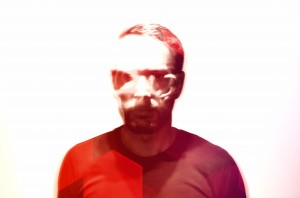 As soon as its tense, antagonistic beat kicks in, Arc Lab‘s ‘Through the Burning Glass’ begins to stretch out before the listener like a vivid, grey horizon. Its diffuse but expressively cadenced rhythms and melodic lines ascend and circulate the song’s atmosphere, creating an exquisite tension between the serenity of the synths and the aggression of the beats. This is a track that you cannot stop listening to over and over again. Lifted from Arc Lab’s 2016 release Anthem. – Wagner Herthog
As soon as its tense, antagonistic beat kicks in, Arc Lab‘s ‘Through the Burning Glass’ begins to stretch out before the listener like a vivid, grey horizon. Its diffuse but expressively cadenced rhythms and melodic lines ascend and circulate the song’s atmosphere, creating an exquisite tension between the serenity of the synths and the aggression of the beats. This is a track that you cannot stop listening to over and over again. Lifted from Arc Lab’s 2016 release Anthem. – Wagner Herthog
Featured Track – Erik Nilsson ‘Ex Nihilo’
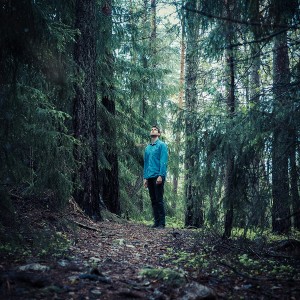 On ‘Ex Nihilo’, the quicksilver opener to his superb 2015 album Hearing Things, Erik Nilsson‘s impressionistic deployment of the guitar is very much in the tradition of Talk Talk’s Mark Hollis: minimal notes, maximum impact. The track beautifully sets the stage for the album to follow, putting the listener in a receptive, contemplative mood that allows Nilsson to work his magic to best effect.
On ‘Ex Nihilo’, the quicksilver opener to his superb 2015 album Hearing Things, Erik Nilsson‘s impressionistic deployment of the guitar is very much in the tradition of Talk Talk’s Mark Hollis: minimal notes, maximum impact. The track beautifully sets the stage for the album to follow, putting the listener in a receptive, contemplative mood that allows Nilsson to work his magic to best effect.
“Still” – A Mixtape Curated by Memorybell
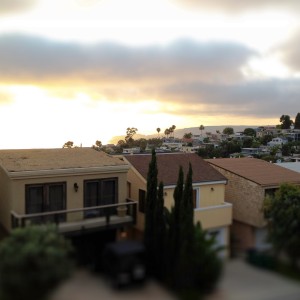 With an album due out next month that is an abject lesson in understanding the spaces between things, Grant Hazard Outerbridge (aka Memorybell) is well poised to present this beautiful mixtape, aptly entitled Still. Lets hand it over to the man himself to explain.
With an album due out next month that is an abject lesson in understanding the spaces between things, Grant Hazard Outerbridge (aka Memorybell) is well poised to present this beautiful mixtape, aptly entitled Still. Lets hand it over to the man himself to explain.
“Society these days is in such a rush. We bounce from one thing to the next, often, it seems, with little idea of where we’re going. As an artist I attempt to fold into my process a slowing down, preferably to a stasis where blurred notes and ideas become suspended, frozen in air where I can analyze and manipulate them. The songs included here for me represent stillness in many of its forms: sitting with discomfort, ennui, idleness, sadness, relief, and release. Once distraction is removed, we’re left with our bodies and thoughts which, in turn, can lead us to some unexpected realizations.” – Grant Hazard Outerbridge (Memorybell)